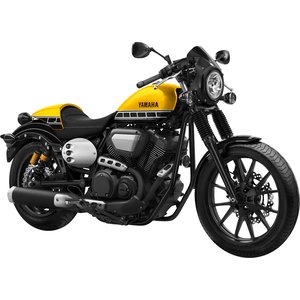Yamaha XV 950 Bolt C-Spec (2015-2016) Review: The Café Cruiser That Rewrites the Rulebook
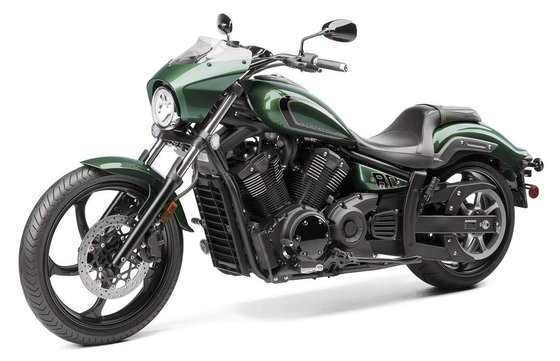
Introduction
The Yamaha Bolt C-Spec defies easy categorization. Introduced in 2015 as a bold departure from traditional cruiser formulas, this machine blends café racer aggression with V-twin soul, wrapped in a package that feels simultaneously retro and forward-thinking. Designed as a "factory custom" for riders who crave personality without compromising rideability, the C-Spec generation (2015-2016) remains a standout in Yamaha's Star lineup. After spending time with this neo-retro marvel, it's clear Yamaha wasn't just building a motorcycle – they were crafting a riding experience that bridges decades of motorcycling culture.
Design & Aesthetics: Where Bobber Meets Café Racer
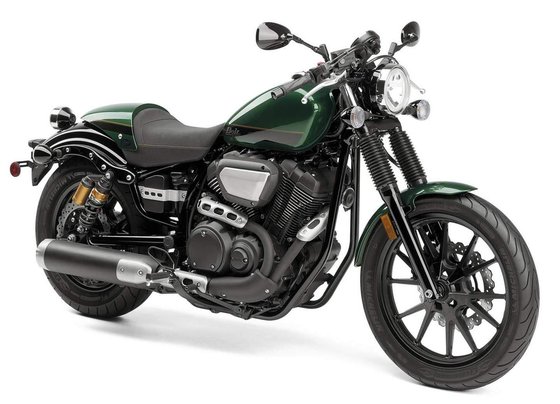
The Bolt C-Spec's visual language immediately sets it apart from the cruiser herd. The 12-liter teardrop fuel tank flows into a slammed solo seat capped by a removable cowl, creating a silhouette that's equal parts 1960s race bike and modern urban warrior. Our test bike's Desert Bronze finish (2016) showed off the matte-and-metal contrast that became a Bolt signature, though the 2015's Liquid Silver and Envy Green options better highlight the bodywork's muscular contours.
Key design elements demand attention: - Clip-on handlebars mounted below the triple clamp - Rearset footpegs positioned 150mm back from standard Bolt placement - 41mm forks dressed in period-correct rubber gaiters - 12-spoke cast wheels with aggressive rubber (100/90-19 front, 150/80-16 rear)
The LCD digital cluster, discreetly mounted between the bars, provides essential data without disrupting the vintage vibe. It's a masterclass in restrained modernism – you'll notice the LED taillight's crisp illumination at night, but it never shouts for attention.
Engine & Performance: Modern Muscle in Vintage Clothing
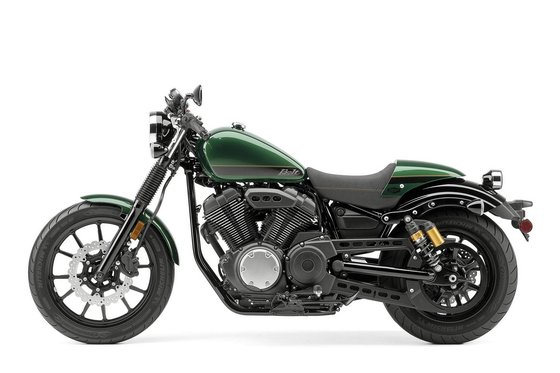
At the C-Spec's core beats a 942cc (58 cu-in) air-cooled 60° V-twin that feels like Yamaha engineers distilled the essence of American cruisers and injected it with Japanese precision. The numbers tell part of the story:
- 51.4 HP @ 5,500 RPM (38.6 kW)
- 79.5 Nm (58.6 lb-ft) @ 3,000 RPM
- 4.61 L/100km (51 mpg) fuel efficiency
But the reality transcends specs. Thumb the starter, and the SOHC 4-valve mill rumbles to life with a muted bark from the 2-into-1 exhaust. There's enough vibration at idle to remind you this is a living, breathing machine, but once rolling, the counterbalanced crankshaft keeps things civil.
The magic happens between 2,500-4,500 RPM. Roll on the throttle, and the 35mm dual-bore fuel injection serves up torque like a barista pulling perfect espresso shots – smooth, consistent, and invigorating. While the 9.0:1 compression ratio suggests premium fuel compatibility, we ran regular unleaded without issue during our test.
Transmission Highlights: - Butter-smooth 5-speed gearbox - Hydraulic clutch requires just two fingers - Belt final drive (21mm Carbon Fiber-reinforced) - 300-mile (483km) range from the 12L tank
This isn't a dragstrip dominator – it's a real-world powerplant that makes suburban errands feel like canyon carving. The C-Spec will happily cruise at 70 mph (113 km/h) with RPMs hovering around 3,200, the engine note transitioning from bassy growl to mechanical purr.
Handling & Ride Experience: The Sporty Surprise
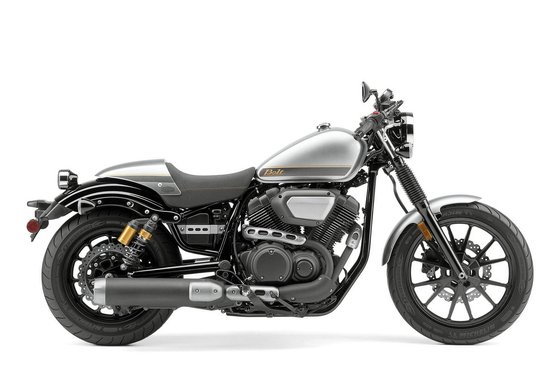
Yamaha's "sport-tuned" claims aren't marketing fluff. With a 1570mm (61.8") wheelbase and 246kg (542 lbs) wet weight, the C-Spec dances through corners like a middleweight naked bike. Key handling components include:
- 41mm telescopic forks (120mm/4.7" travel)
- Preload-adjustable dual shocks (71mm/2.8" travel)
- 298mm wave rotors front/rear with 2-piston calipers
The riding position redefines cruiser ergonomics. Unlike the standard Bolt's relaxed posture, the C-Spec's clip-ons and mid-mount pegs create a 32° forward lean (measured from vertical). It's sporty without being punishing – think Ducati Monster rather than Yamaha R1. At 5'9" (175cm), I could maintain this stance for two hours before wanting a stretch.
Handling Verdict: - Low-speed agility: Surprisingly nimble in parking lots - Cornering clearance: 135mm (5.3") ground clearance allows decent lean - Braking performance: Adequate for the bike's pace, but aftermarket pads recommended for aggressive riders
The suspension walks a fine line between compliance and control. Rough pavement transmits some jolts, but the tradeoff is tenacious grip when pushing through sweepers. Riders over 200 lbs (91kg) will want to crank up the rear preload.
Competition: How the C-Spec Stacks Up
In the middleweight cruiser segment, the Bolt C-Spec faces formidable rivals:
- Harley-Davidson Iron 883
- Pros: Strong brand cachet, extensive customization
- Cons: Heavier (256kg/564 lbs), less sophisticated suspension
-
Differentiator: The C-Spec offers 17% more torque and modern fuel injection
-
Honda Shadow Phantom
- Pros: Lower seat height (25.8"/655mm), shaft drive
- Cons: Softer suspension, vague steering feedback
-
Differentiator: Bolt's café styling and sport ergos attract younger buyers
-
Kawasaki Vulcan S
- Pros: Ergo-Fit adjustable components, liquid cooling
- Cons: Less characterful parallel-twin engine
- Differentiator: The C-Spec's V-twin delivers more visceral thrills
Where the Yamaha shines is in its chameleon-like versatility. It's a credible commuter, weekend backroad bomber, and showstopping custom base – all while costing less to maintain than its air-cooled competitors.
Maintenance: Keeping the Bolt in Fighting Trim
As MOTOPARTS.store's resident wrench, here's my maintenance deep dive:
Engine Care: - Oil changes: Every 6,000 km (3,728 miles) with 10W-40 mineral oil - Valve checks: Every 16,000 km (9,942 miles) – shim-under-bucket design - Air filter: Replace every 24,000 km (14,913 miles) – easy side access
Common Upgrade Points:
1. Exhaust
The stock muffler's catalyst restricts flow. A slip-on like the Vance & Hines Twin Slash boosts torque by 4-6% while enhancing that V-twin bark.
-
Suspension
Progressive Suspension 412 series shocks ($299) transform rear-end behavior. For front-end improvement, Ricor Intiminators ($189) add damping control. -
Seat
The stock perch gets firm after an hour. Mustang Tripper Solo Seat ($349) adds gel padding without ruining the café lines.
Pro Tips: - Clean and lube the belt every 1,600 km (1,000 miles) in dusty conditions - Upgrade brake lines to stainless steel for improved lever feel - Install frame sliders – the engine cases are vulnerable in tip-overs
Conclusion: Timeless Appeal Meets Modern Sensibility
The Yamaha Bolt C-Spec isn't just a motorcycle – it's a blank canvas for self-expression. While the 2015-2016 production run was brief, its impact resonates today. This machine proves cruisers don't need aping Harley-Davidson to succeed, offering instead a distilled riding experience that prioritizes engagement over excess.
For riders seeking a distinctive middleweight that blends café panache with cruiser comfort (and a healthy dose of aftermarket potential), the C-Spec remains compelling. It's the motorcycle equivalent of a perfectly broken-in leather jacket – familiar yet fresh, comfortable but never boring. At MOTOPARTS.store, we keep our shelves stocked with Bolt-specific upgrades because we know – once you ride one, you'll want to make it uniquely yours.
Specifications sheet
| Engine | |
|---|---|
| Stroke: | Four-stroke |
| Max power: | 39 kW | 52.0 hp |
| Max torque: | 80 Nm |
| Fuel system: | Twin-Bore electronic fuel injection with throttle position sensor |
| Max power @: | 6000 rpm |
| Displacement: | 942 ccm |
| Max torque @: | 3000 rpm |
| Bore x stroke: | 85.0 x 83.0 mm (3.3 x 3.3 in) |
| Configuration: | V |
| Cooling system: | Air |
| Compression ratio: | 9.0:1 |
| Number of cylinders: | 2 |
| Valves per cylinder: | 4 |
| Dimensions | |
|---|---|
| Wheelbase: | 1570 mm (61.8 in) |
| Wet weight: | 246 |
| Seat height: | 765 mm (30.1 in) |
| Overall width: | 775 mm (30.7 in) |
| Overall height: | 1160 mm (45.7 in) |
| Overall length: | 2295 mm (90.4 in) |
| Ground clearance: | 135 mm (5.3 in) |
| Fuel tank capacity: | 12 L (3.2 US gal) |
| Drivetrain | |
|---|---|
| Final drive: | belt |
| Transmission: | 5-speed |
| Maintenance | |
|---|---|
| Rear tire: | 150/80-16 |
| Engine oil: | 10W-40 (inferred for air-cooled V-twin) |
| Front tire: | 100/90-19 |
| Brake fluid: | DOT 4 |
| Spark plugs: | NGK CR8E or NGK CR8EIX (inferred from common Yamaha models) |
| Engine oil capacity: | 4.3 |
| Engine oil change interval: | Every 5000km or 2 years (inferred) |
| Valve clearance check interval: | 24,000 km / 15,000 mi |
| Chassis and Suspension | |
|---|---|
| Rake: | 29° |
| Frame: | Aluminum double-cradle |
| Trail: | 130 mm (5.1 in) |
| Rear brakes: | Single 298mm wave-type disc, 1-piston caliper |
| Front brakes: | Single 298mm wave-type disc, 2-piston caliper |
| Rear suspension: | Preload adjustable dual shocks with remote reservoirs |
| Front suspension: | 41mm telescopic fork with rubber boots |
| Rear wheel travel: | 70 mm (2.8 in) |
| Front wheel travel: | 120 mm (4.7 in) |



